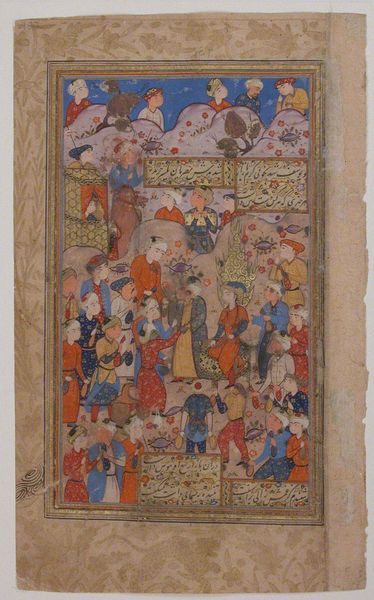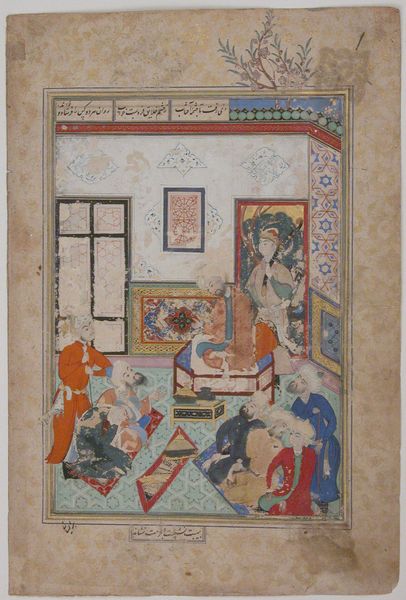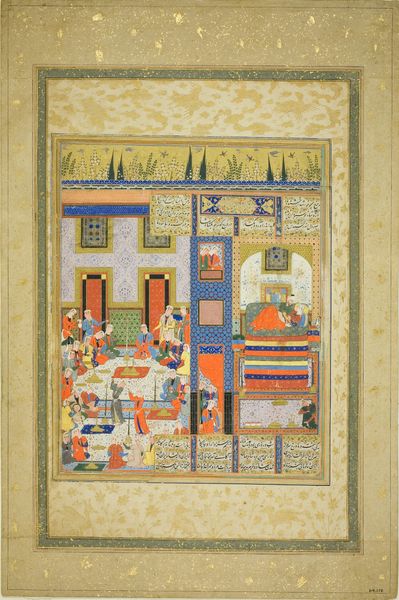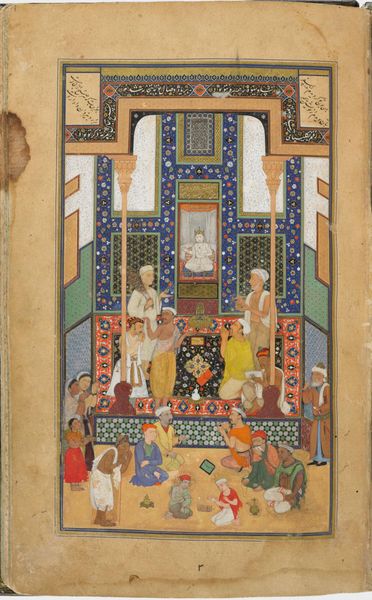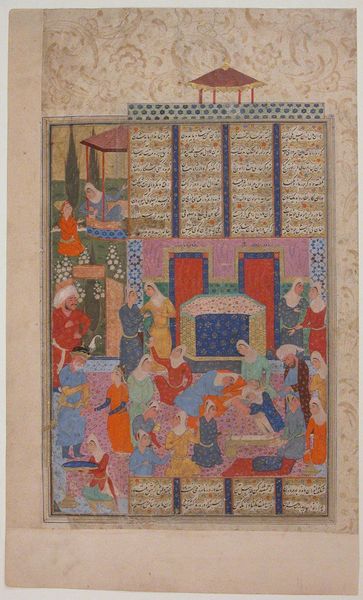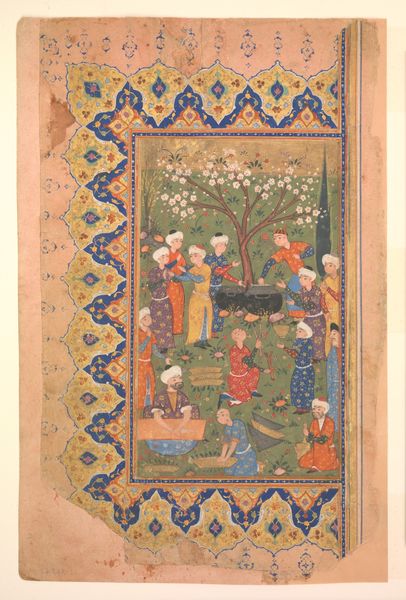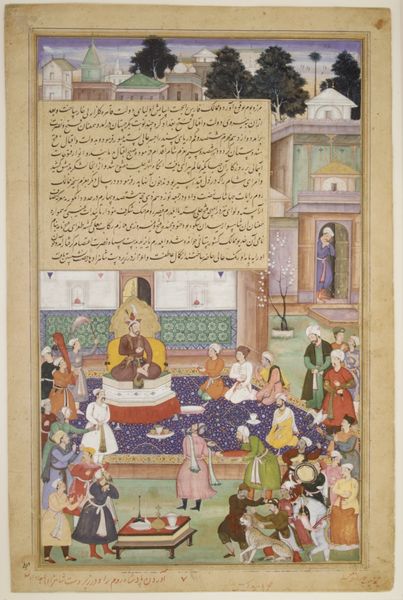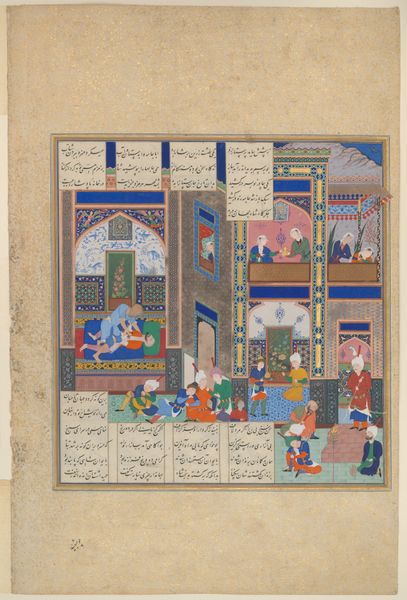
"Zulaikha after her Second Dream of Yusuf", Folio from a Yusuf and Zulaikha of Jami 1550 - 1599
0:00
0:00
painting, watercolor, ink
#
narrative-art
#
painting
#
figuration
#
watercolor
#
ink
#
men
#
islamic-art
#
history-painting
#
miniature
Dimensions: H. 9 in. (22.9 cm) W. 5 1/4 in. (13.3 cm)
Copyright: Public Domain
Editor: So, this piece is called "Zulaikha after her Second Dream of Yusuf", from a manuscript of Yusuf and Zulaikha by Jami, dating back to sometime in the latter half of the 16th century. It's crafted with ink and watercolor. I'm immediately drawn to the vibrant colors and the detailed composition; there’s a certain dreamlike quality about it. What stands out to you? Curator: What I find fascinating is how this miniature, likely intended for private viewing, presents a very public drama. Look at how Zulaikha, framed by those elaborate architectural details, becomes a spectacle. The painting isn't just illustrating a story; it's performing social roles by displaying idealized behavior within the setting of a domestic interior. It speaks to how art was used to shape moral narratives for elite audiences. Editor: So, the placement of figures and architecture emphasize moral storytelling? Curator: Precisely! And think about the historical context: Islamic art often incorporated complex symbolic language. Consider what might be going on institutionally—who commissioned this piece? How would the patron expect to be perceived by possessing it? These paintings functioned as cultural capital, displaying both piety and refined taste. The artist and patron engaged in a very calculated visual dialogue, and the result affects audiences even today. What’s your read on this interplay between patron and intended audience? Editor: That gives me a completely new perspective on how to understand art. It’s fascinating how a single image can tell a story about aesthetics and moral instruction. Curator: Exactly! The social history behind the artwork is just as interesting as the aesthetics in front of your eye. Thinking about its production and reception unveils even more than the surface of the composition. I learned from your initial response too—thinking about how our contemporary appreciation and access, through museum spaces, for instance, further changes the dialogue.
Comments
No comments
Be the first to comment and join the conversation on the ultimate creative platform.

